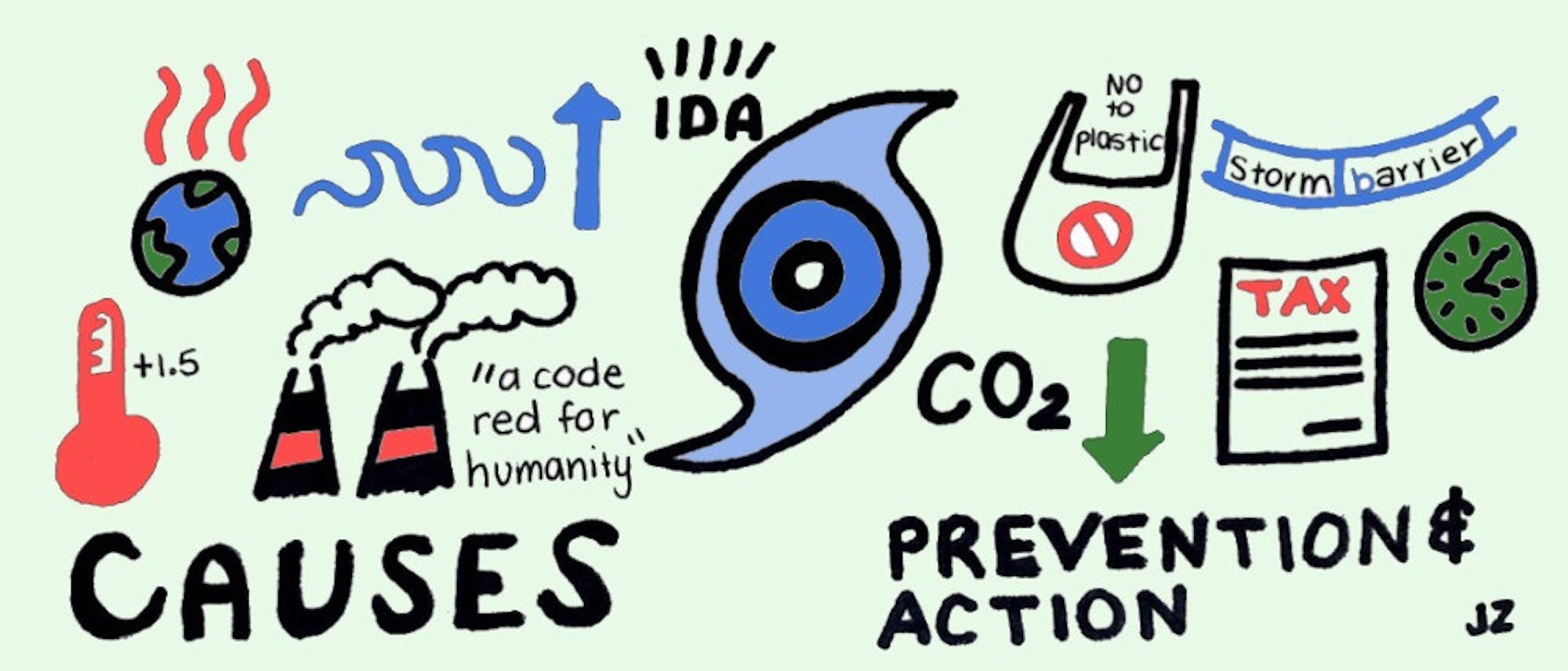By the numbers themselves, it goes without saying that Hurricane Ida has brought immense destruction and desperation to the neighborhoods and areas it passed through. Nearly a hundred people have died from Ida’s tornadoes, extreme flooding and heavy winds. Ida hasaffected 22 states, plus Washington, D.C., and torn through 1,500 miles of the United States.
Unfortunately, Ida’s devastation is not an isolated event. Evidence from the Intergovernmental Panel on Climate Change shows that climate change is increasing the intensity of storms and resulting in damage that can not be undone.
It is imperative that we take action now against climate change by limiting the emission of greenhouse gases and investing in the use of renewable energy. If we do not make dramatic changes, rising sea levels and intense storms will make the landscape of our world unrecognizable and the effects of extreme weather and federal policies will continue to disproportionately affect marginalized communities.
As the Earth warms from the use of fossil fuels, the intensity of storms increases — a situation that António Guterres, the secretary-general of the U.N., called “a code red for humanity.”Guterres cited our proximity to the threshold of warming by 1.5 degrees Celsius, which is considered the boundary between manageable or catastrophic changes to our climate and urged for immediate solutions that promote green economies and cleaner air. And while it is too late to reverse many of these changes, such as rising sea levels, it is not too late to take action which could reduce the use of many drivers of climate change.
The scale at which we must combat this crisis needs to be huge: while individual actions such as using less single-use plastic, reducing meat consumption and shopping more sustainably are important, change at the federal level is what will ultimately force big corporations to reduce their emissions of carbon dioxide and other greenhouse gases.
One way the federal government can take action is to create a fee or a tax to motivate corporations to reduce emissions. This can take the form of requiring companies to pay a fee per each unit of carbon dioxide or other greenhouse gases emitted. Corporations are forced to either pay the fee or change their behavior. Since 2018, there have been nine proposed pieces of legislation by U.S. senators and representatives attempting to authorize a federal carbon tax. However, such legislationcontinuously fails to win the support it needs to pass.
In addition to preventing further damage to the climate, there are actions the government must take in order to mitigate the effects of a climate that causes extreme weather conditions like in the case of Hurricane Ida. Back in 2013, the federal government spent $1.3 billion on a storm surge barrier in order to prevent future storm surges in the area around New Orleans after the devastation of Hurricane Katrina. On account of this levee system, there was reduced flooding and less severe damages — and overall economic loss — under Hurricane Ida than under Hurricane Katrina 16 years ago.
Even though implementing preventative systems can be costly, repairing cities after extreme natural disasters is extremely expensive. Since 2005, extreme weather has resulted in$450 billion in damages. This is money that could have been allocated toward preventative measures that would result in lasting change. Nonetheless, it’s important to note that systems such as the barrier in New Orleans are not a be-all and end-all.
Unfortunately, many smaller working-class towns outside of New Orleans did not reap the benefits of flood protection projects. In Larose, La., which is just over 50 miles from New Orleans, for decades local government officials havetried and failed to build a system similar to that of the one in New Orleans.
It is most often low-income communities and communities of color that aredisproportionately impactedby climate policies. For areas with smaller populations or less economic leverage, it’s much harder to gain support and funding from the federal government. While the people of New Orleans were able to receive aid, communities like Larose were largely forgotten.
Without concrete action, hurricanes at the same level of Hurricane Ida, or worse, will continue to wreak havoc and bring further devastation and hardship. Those that can afford to move might try to escape areas more susceptible to extreme weather. Those that can’t afford to leave will be left behind and face the greatest consequences of climate change. Without intervention, these areas might not survive.






